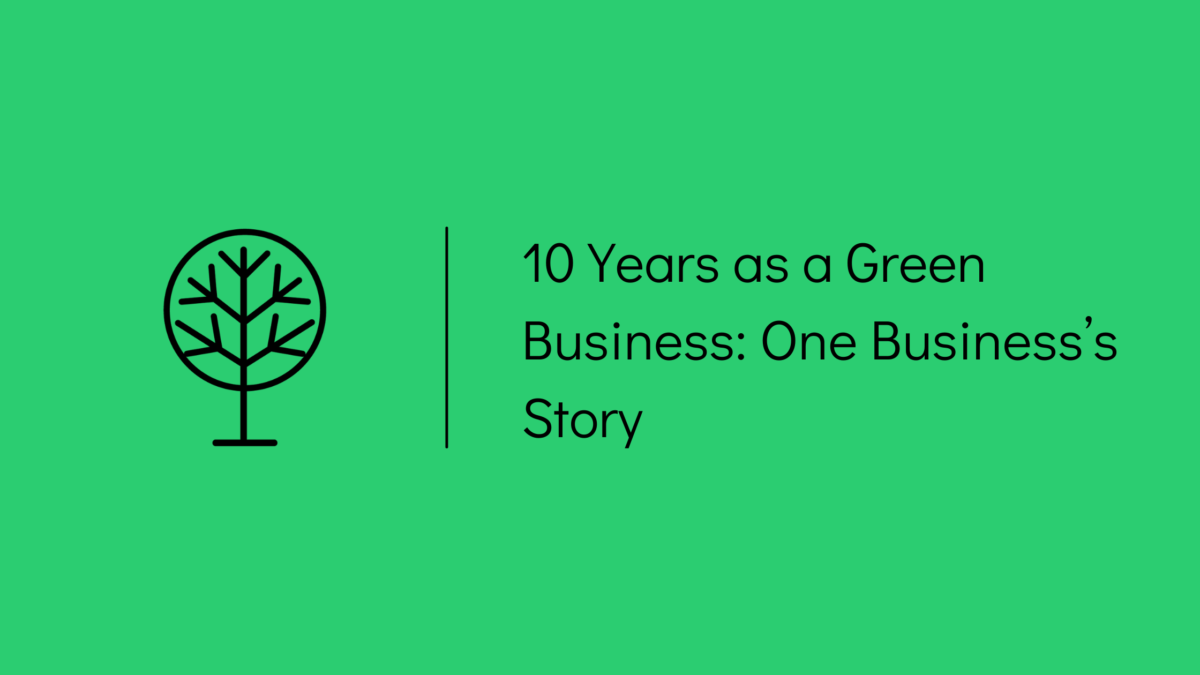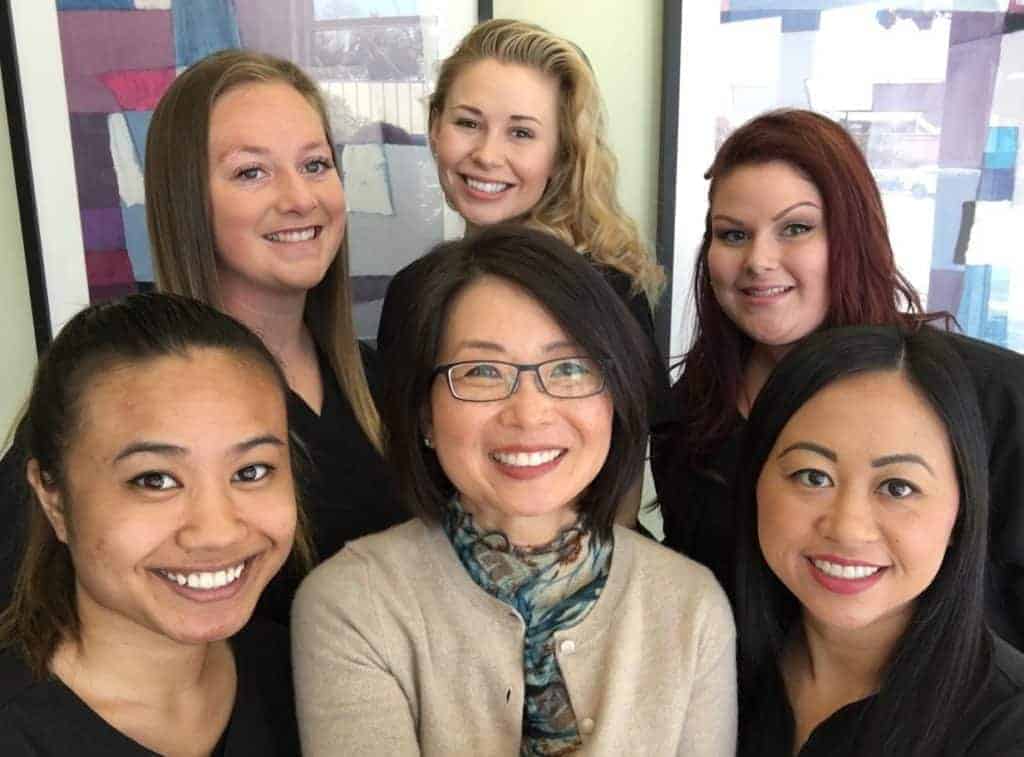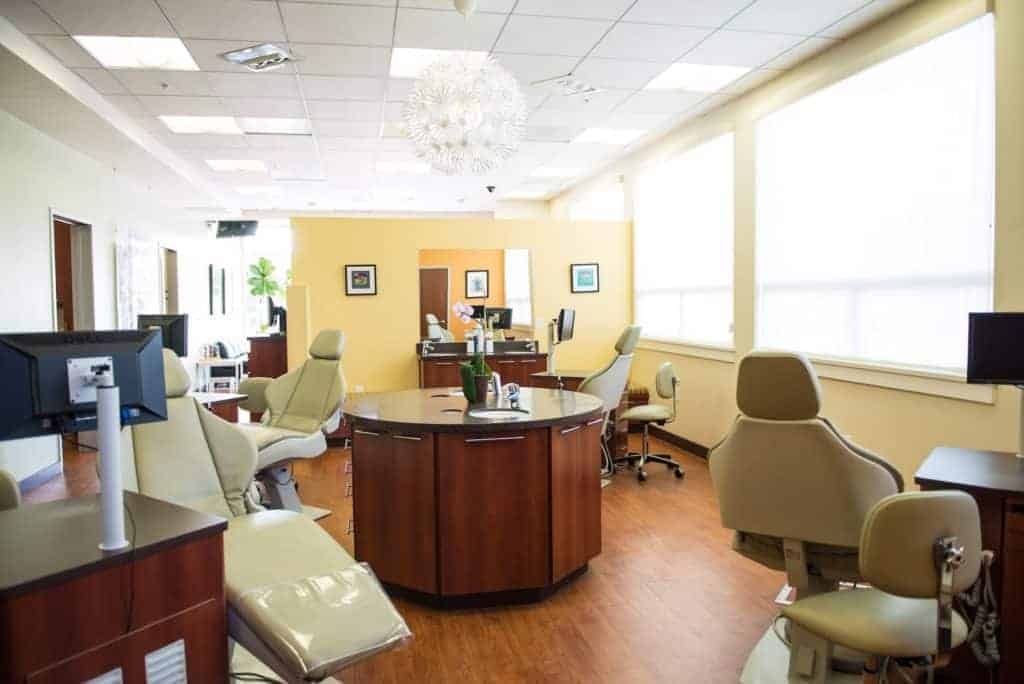
The best part of my work in sustainability for small businesses is that I get to meet awesome business owners and professionals who are doing really great work. In this ongoing series, I’ll be sharing some of these stories to illustrate what sustainability looks like in action.
Dr. Immi Song has been practicing orthodontics since 1993 and truly enjoys working closely with her patients and staff to achieve beautiful and healthy smiles.
Dr. Song opened her practice in Albany, CA in 2000. She loves working in this diverse and inclusive community and feels privileged to be a part of it. Her practice has been a Certified Green Business for 10 years.
She is a graduate of University of California Berkeley with a Bachelors of Arts degree in Molecular Biology. She received her Doctor of Dental Surgery degree from Columbia University School of Dental and Oral Surgery. At Columbia University SDOS, she was admitted to Omicron Kappa Upsilon, National Dental Honor Society, where the faculty elects members based on scholarship and character.
After finishing a General Practice Residency program at Booth Memorial Medical Center (now New York Hospital, Queens), she completed her advanced orthodontic residency and received a Master’s of Science in Oral Biology from Northwestern University.
She was adjunct assistant professor of Orthodontics at the University of Pacific, San Francisco from 1998-2010. Dr. Song is also a past president of the Berkeley Dental Society.
1. What made you decide to go into orthodontics?

After graduating from UC Berkeley with a degree in Molecular Biology, I decided to pursue a career in dentistry – specifically orthodontics. I was drawn to this field because it combines both science and art. I have been interested in dentistry since childhood. I had a wonderful first dentist who left a great impression on me. I love working as an orthodontist. It not only allows me to work closely with children and adults to enhance their dental health and smiles, but we also build rewarding relationships along the way.
2. What are some of the environmental considerations that you factored into the building of your dental office? Why did you choose to implement these features and/or practices?
When building my dental office, we followed the LEED guidelines. I worked with a good friend, Mignon O’Young, who is a Certified Green Building Professional and LEED AP. Some of our green building features include solar panels, operable windows to decrease the use of the air conditioner, use of natural lighting, and FSC-certified wood for all the framing lumber. Our interior and exterior lights are on a timer. To reduce heat islands, we used concrete paving material with solar reflectance index (SRI) of at least 29. All paint products, interior and exterior met Green Seal 11 standard (GS-11). Drought tolerant landscaping, low flow faucets and toilets, and a water filtration system for sterilizers and for drinking were also implemented.
Use of technology has made it easier for us to be even more sustainable. Digital x-ray equipment eliminates toxic chemicals used for processing x-ray film. We also use an intraoral scanner and make virtual digital models of our patients’ teeth. Because of this technology we can reduce the use of dental materials, waste and water usage while also increasing patient comfort. We are a paperless office. We use digital charts and use mostly email for our patient correspondences such as referrals, records, and statements.

3. What has been your biggest challenge in making your business sustainable?
My biggest challenge in implementing sustainable technology has been the initial cost. However, I feel the enhanced efficiency and better service to our patients and referring doctors are well worth the initial investment. Our patients appreciate that we keep up with the latest technology, which is not only better for patient care but also makes our office much more sustainable.
4. How have you engaged your employees in your sustainability efforts?
Our team members take pride and comfort in working in a healthier and sustainable environment. We continually train our new team member to our green business policies, including green purchasing and sorting waste properly. We have a dedicated team member who helps with training and enforcing our green policies. We work as a team to figure out how to be more sustainable.
5. Are you involved in community activities or giving back to the community? How do you see this as being part of your overall sustainability efforts?
I really enjoy giving back to my community whether doing volunteer work or sponsoring activities for local schools and community organizations. Whenever possible, we like to work with local businesses and support the local economy. I am a member of Albany Chamber of Commerce as well as the Solano Avenue Association. For many years, I have worked with UC Berkeley Pre Dental Students and started a Job Shadowing Program with the help and cooperation of the members of the Berkeley Dental Society.
6. Why did you choose to become a Certified Green Business? What did you learn by going through the process?
There was a showing of the documentary, “An Inconvenient Truth,” in 2006 at UC Berkeley that I attended. It made an impact on me. I became one of the first dentists in my community to be certified in 2006. When I first signed up to become green certified, I wasn’t sure if a dental office could earn the certification. It’s now my ten year anniversary as a Certified Green Business, and I am glad that I took that first step.
7. What advice would you give to others who are also working to integrate sustainability into their businesses?
I think we have a very supportive and helpful community. Don’t hesitate to ask for help. Throughout my initial certification and recertification processes, there were always people willing to assist and support me. I couldn’t have done it without their help.